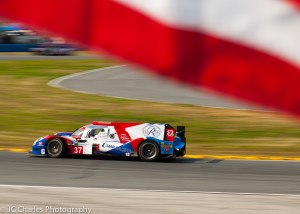I was surprised and a bit disappointed, that Alexander Rossi did not get the full time ride with Manor Grand Prix. Rossi had a successful series of runs at the end of 2015, where he handily beat teammate Will Stevens. His “ride”, however, was taken this year by a paying driver, Rio Haryanto.
When you look at at the racing records of Alexander Rossi and Rio Haryanto, there is no comparison. In Formula BMW, Rossi won both the US and World Championship, Haryanto only won the Pacific Championship. Rossi’s best championship finishes include a 4th in GP3, a 3rd in Formula Renault 3.5 and a 2nd in GP2. Haryanto’s best finish is a 4th in GP2.
Online, the arguments began.
Haryanto, much like Pastor Moldano, has his national government paying for his ride in F1. Moldano had the Venezuelan state oil company, PDVSA, pay his way. When oil prices fell, the state could no longer pay and he is no longer in the sport. In the case of Haryanto, the Indonesian state owned oil company Pertamina is footing the bill.
For the sport, I wonder if this is this good, bad or somewhere in between? Are paying drivers really a problem? In the end, this may be a good thing for Alexander Rossi. I’ll get to that shortly.
A Quick History Lesson
Let’s look at this from a historical perspective. In the early years, racing started out as a way for the new automobile industry to prove the strength, speed and durability of their cars. Racing has been used as a marketing vehicle for automakers from the very beginning of the sport. Due to that, money has been integral to the sport since day one. Racing has always been a business first and a passion second. Win on Sunday, sell on Monday!
Drivers were hired for their speed and expertise. Still, there are many who have essentially bought their way onto the track. They paid for the sponsorship and wanted to drive the car. Because we look at racing through the rose tinted glasses of “sport”, we expect the best drivers, and those with the best records and thus potential, to be highly valuable in this market. That is, unfortunately for the fan, not the case. Racing is a business. The first rule of business is first and foremost to stay in business. When teams need money, they find a way.
Teams at the tail end of the grid need any money they can so to stay in business and therefore be able to compete. Teams have taken many routes to get the money to just be there. NASCAR is a perfect example of how economics can trump competition. For many years, the “start and park” teams raced only a dozen or so laps, in order to get the guaranteed finishing money. They pulled in to the pits so not to damage the cars and even save the tires for the next race. In 2015, last place for the Daytona 500 earned $262,000. They used the finishing money in order run the next race.
The “start and park” teams have been there for a long time, we never really noticed them. That was until the economy dropped out in 2008, that we, the fan, saw them as an issue. However, without those teams, Tommy Baldwin Racing and Front Row Racing would not be here today.
I believe when issues like this rise to the level where the fan see it, it is an indicator of the poor health of the sport. As with my NASCAR example above, when the sport and the economy recovered from the financial doldrums, the issue eventually was resolved.
It is the same for F1. With the loss of teams in recent years (Catherham F1 and HRT)and Marussia/Manor needing loans from Bernie Eccelstone to finish the season, 2014 and 2015 was extremely rough. Though the financial problems are far from over, there is beginning to be an acceptance of issues. People are talking and Bernie is still saying stupid things. At least the problems can be addressed.
Drivers paying for rides are everywhere. Sports car racing, for example, survives because of these pay to play drivers. While imperfect and somewhat controversial, the FIA has developed their Driver Catagorization (rating) system in recognition of this. IndyCar, too, has its pay to play drivers, with the Indy 500 itself littered with names like Patrick Bedard, Don and Bill Whittington, Randy Lanier, and John Paul Jr. Bedard was a writer for Car & Driver who raced in 1983 and 1984. Whittington, Lanier and Paul paid for their rides, at least early on, with money gained through their drug smuggling operations. All three did serious jail time for their crimes.
Throughout the history of auto racing, there are three key truths. Racing is about the money, not the sport. Talent is secondary to money. Regardless of what any sporting body says, fans are not the stakeholders of the sport.
Alexander Rossi
As for Alexander Rossi, I don’t want to see his talents wasted at the back end of the grid. Manor Grand Prix has a history of financial issues and I don’t believe they will improve significantly in the near term. While their car now has Mercedes power and they have a Mercedes factory driver in 2016 DTM Champion Pascal Wehrlin, I do not see it being very competitive this year. Add to that, if they continue with financial issues, that could overshadow any effort on Rossi’s part.
Why pay to fail? A year or two in Indycar, with consistently good finishes, could be the ticket to an F1 test, as it was for new team owner Michael Andretti. That route has worked for F1 Champion Jacques Villeneuve.
While we rail against pay drivers, keep in mind that three time F1 Champion Niki Lauda started out paying for his rides at March and BRM!
